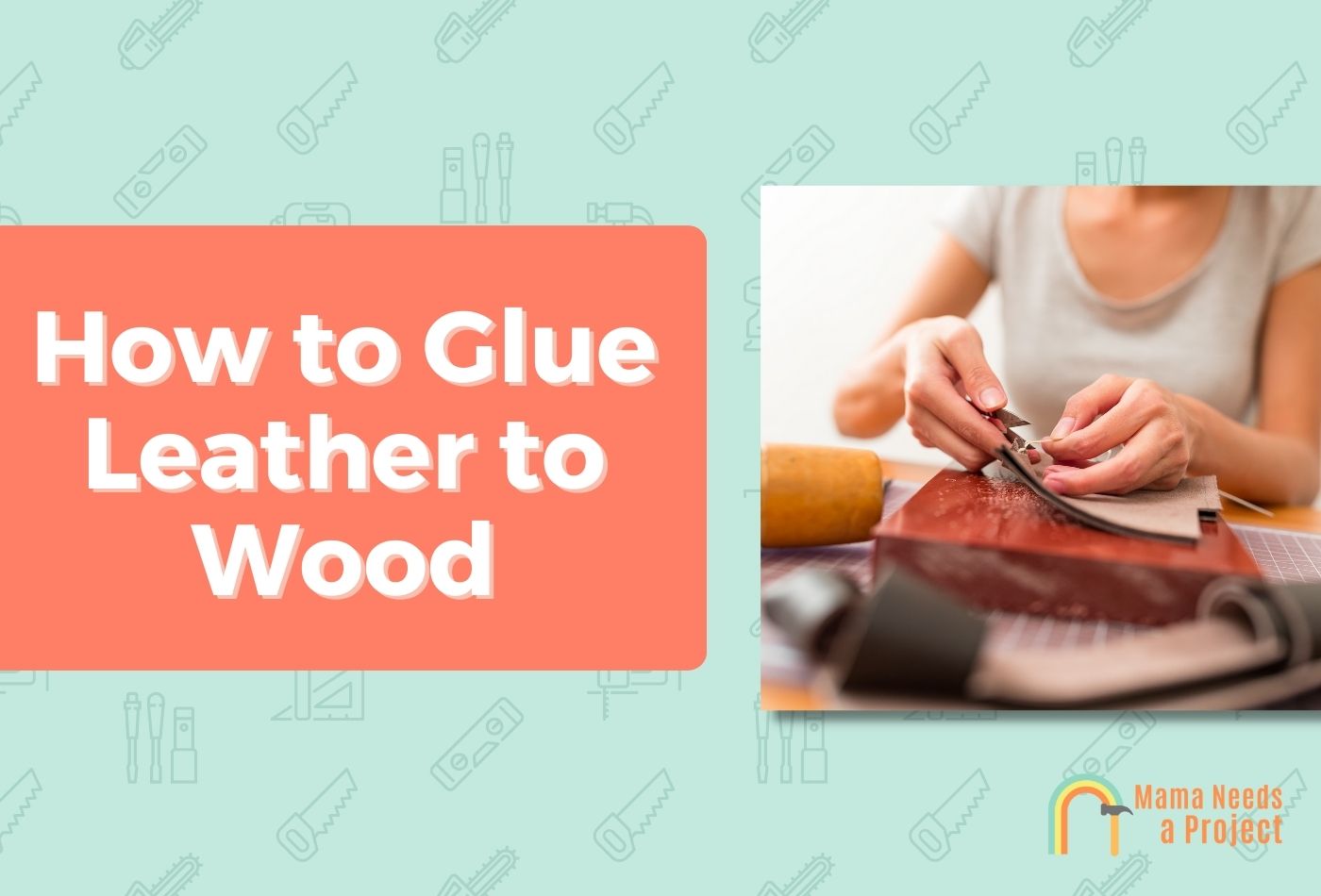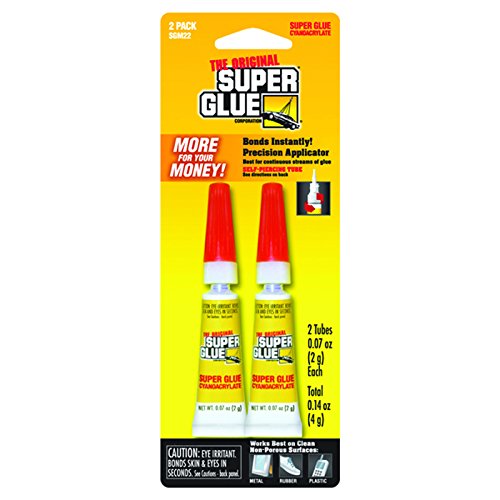How to Glue Leather to Wood (EASY Step by Step Guide)
Wondering how to glue leather to wood?
Whether you’re working on leather crafts or perhaps some wood furniture – understanding how to glue leather to wood can be essential.
In this guide, I’ll explain exactly how to glue leather to wood, some of the best glues for leather to wood, and much more. Let’s dig in!
- Yes, you can glue leather to wood using a variety of glues.
- Some of the best glues for leather to wood include Titebond III, Gorilla Glue Super Glue, and Loctite Super Glue.
Gluing Leather to Wood in Six Simple Steps
Adding leather to wood projects can take them to a whole new level. You can use leather and wood together in many exciting ways, such as veneer on wood projects, a leather inlay on a wood frame, or leather handles on a wood box.
Whatever your leather and wood project, here are six simple steps to glue leather to wood.
Step 1: Gather Tools and Materials
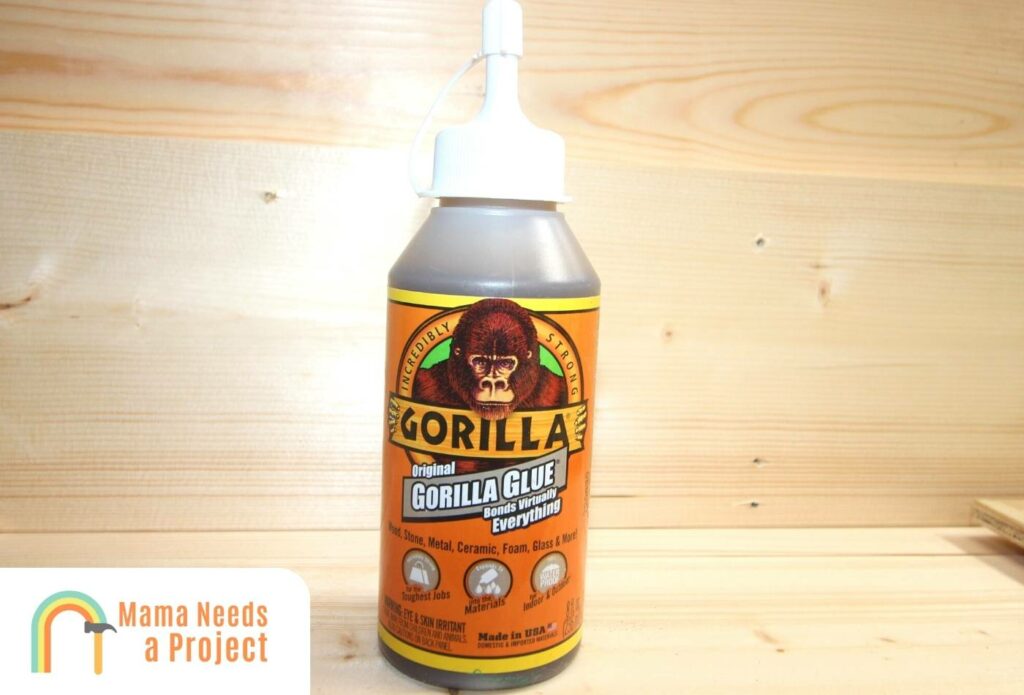
Once you start gluing the pieces together, you need to work efficiently to avoid mistakes, so it helps to have everything you need handy.
Besides for leather, wood, and glue, you’ll need the following tools and materials. I’ll tell you about the best types of glue for leather and wood later in this article.
- A brush or small roller to spread the glue
- Dry rags and a damp cloth
- Rubber gloves (latex doesn’t work well with some types of adhesives)
- Ruler
- Pencil
- Scissors
- Utility knife
- Wood mallets
Step 2: Surface Preparation
The leather and wood surfaces that you’re working with need to be clean and dry. You should also lightly sand the wood with medium or course grit sandpaper to remove splinters and rough edges. You want the wood surface to be free of blemishes, but you also want it to be slightly rough so that the adhesive adheres to it better.
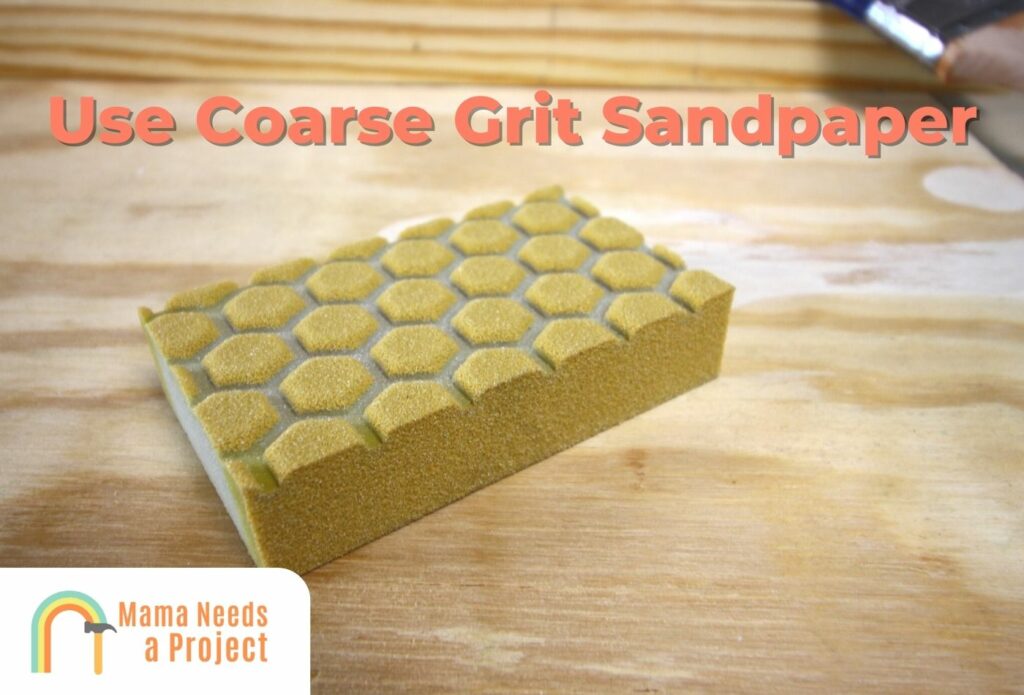
For the leather surface, use a wire brush or a hand leather rougher if you have one. Brushing the leather will help the glue bond with the leather.
Step 3: Apply the Glue
Clearly mark on both materials where the glue needs to go before applying it. With some projects, both pieces will be completely covered with glue, but that’s not always the case.
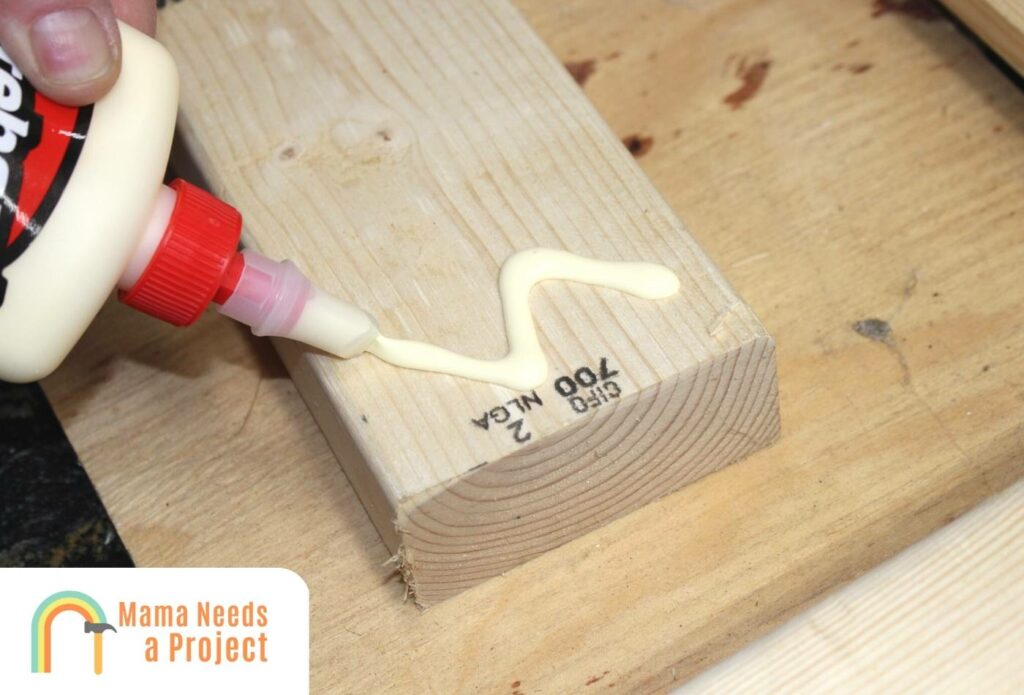
For large projects, it’s easier to apply glue with a small foam roller brush, like the kind used for painting. If you’re working on a small project, you can spread the glue with a brush. I recommend these wood glue dispensers that make it super easy.
Some people even use their fingers to spread the glue on both surfaces but I don’t like doing this personally. Use whatever works for you to spread the glue as evenly and smoothly as possible.
Many of the best glues for leather and wood don’t dry instantly, so you have a little time to work to make sure that it’s spread evenly. Avoid getting glue on the opposite side because it will discolor the leather and ruin the appearance.
Step 4: Place the Leather on the Wood
With glue applied to both sides of the project, carefully put the leather and wood surfaces together. You will basically have one shot at this because repositioning is tough, and you could end up with ripples in your leather.
Press the two surfaces together firmly and smooth out any wrinkles. You can use a wooden scraper or putty knife to smooth the leather, especially if it is thin. The thicker the leather, the less chance there is of it wrinkling. For some projects, you may need to trim the excess leather or smooth it around corners.
Sandwich your project between a couple of boards and place something heavy on top of the whole thing. You can use clamps or heavy objects like books or cinder blocks to place on top of your project while they are drying to ensure a strong adhesion.
Step 5: Allow to Dry
Different types of glue have different drying times. Some may only take 30 minutes to set completely, while others need up to 24 to 48 hours. Humidity and temperature will also affect the drying time.
Allow your project to dry completely before moving on to the next step.
Step 6: Test the Bond
After you’re sure that the glue has dried, you can test the bond to ensure that it will hold. Try tugging gently at first, then pull firmly to determine if you achieved a tight bond.
What is the Best Glue for Leather and Wood?
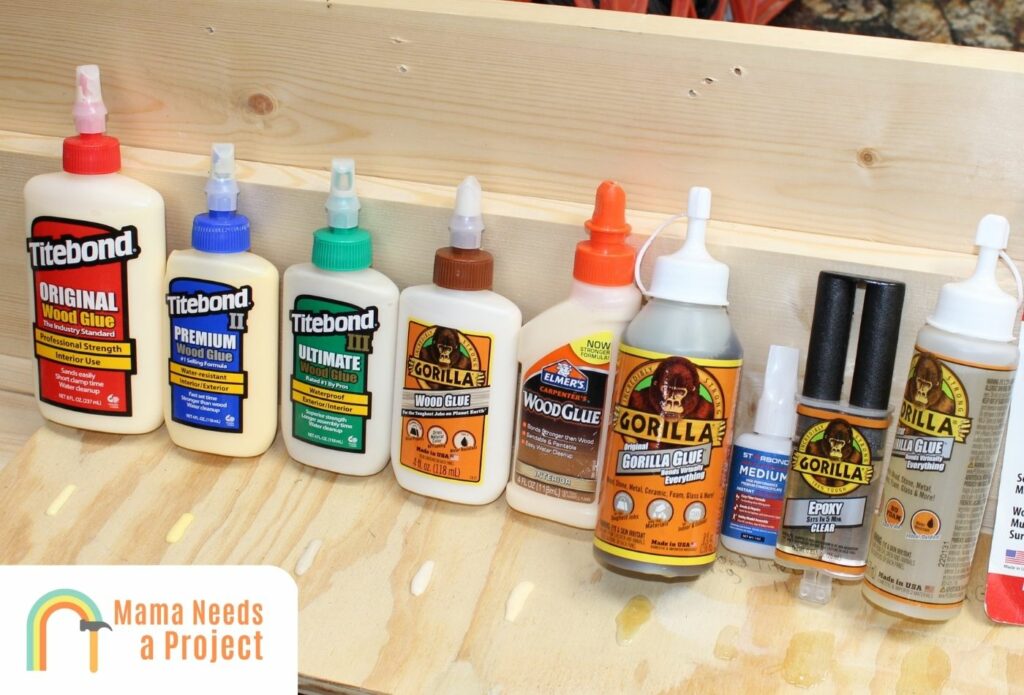
When working with wood, it’s easy to glue two pieces together with wood glue, and you can also glue leather to many types of materials using epoxy resins and contact cement. But what’s the best glue for leather and wood? I’ll explain the different types of glue and then tell you about my favorite brands.
Different Types of Glue For Wood and Leather
There are many different types of glue, but these are the best types for gluing wood and leather. When you’re working with these two materials, here are the three types of glues you can choose from:
- PVA glue– wood glues that contain a chemical known as polyvinyl acetate, or PVA, are non-toxic and easy to spread.
- Cyanoacrylate glue– known as instant adhesives, cyanoacrylates are polymer plastic resins that are strong, fast-acting adhesives.
- Contact cement– contact cement needs to be applied to both surfaces, which should be properly prepared for the best adhesion.
Wondering how to glue metal to wood? Check out my guide on gluing metal to wood!
Best Glues for Leather and Wood
Here are the best glues I’ve found for gluing leather to wood. When working with leather and wood, I’ll choose different types based on how the project will be used, what type of weather-resistance it needs, and how large of a project it is.
1. Titebond III Ultimate Wood Glue
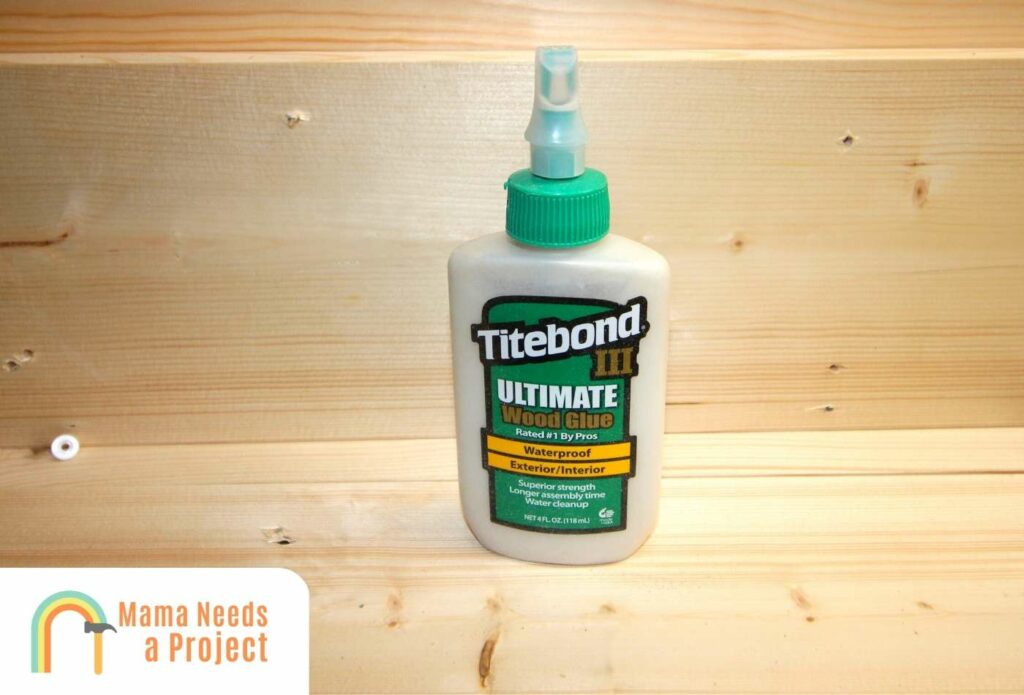
Titebond III Ultimate Wood Glue is the best glue to have around whenever you’re working with wood, and it works great to bond leather and wood surfaces together. It cleans up easily with water, and it’s an excellent, one-of-a-kind glue.
Titebond III is a PVA glue, so it’s non-toxic and doesn’t have any odors. You’ll get the strongest bond with this type of glue when the two pieces you’re joining are clamped together. Titebond III doesn’t dry completely clear, but there is a Titebond Translucent Wood Glue if you need glue that dries clear.
Once Titebond III is dry, it can be sanded or painted, but it won’t accept varnish. Some people call it waterproof, but it’s actually more water-resistant because it won’t last when it’s submerged, and it’s not suitable for marine use.
- Item Weight: 0.417 lb
- Country of Origin: China
- Color: Tan
2. Gorilla Super Glue Gel
Regular superglue can be hard to work with, but Gorilla Super Glue Gel is a thicker formula that’s easier to apply. It can be used on almost any material and it is one of the best glues for leather and wood.
Some of the things I like most about this type of glue are that it dries clear and has a fast setting time. However, that means you need to work quickly, so it’s not the best glue if you need to take your time or you’re working on a large project. You also don’t have a lot of room for error with this glue.
One of the main benefits of using Gorilla Super glue gel is that you don’t need to clamp it to get a tight bond, making it a good choice when you’re gluing two pieces together that aren’t two-dimensional.
- GEL FORMULA: No run control gel formula that is great for use on vertical surfaces
- ANTI CLOG CAP: Helps keep the glue from drying out. It’s Gorilla tough use after use.
- IMPACT TOUGH: Specially formulated for increased impact resistance and strength
3. Leather and Wood Super Glue
Super Glue is a brand name that has come to be used in reference to any fast-acting adhesives, and this Leather and Wood Super Glue is a special formula that’s actually made under the Super Glue brand.
The Leather and Wood Super Glue is a cyanoacrylate just like regular superglues, but this formula is designed specifically for bonding wood and leather surfaces. Because it’s fast-acting, it has the same pros and cons as other types of superglues.
- The product is 2PK 2G Super Glue
- Elegant and smooth finish
- The product is manufactured in China
4. Glue Masters Professional Grade Glue
Another cyanoacrylate adhesive for attaching leather to wood, Glue Masters Professional Grade Glue has a few advantages over other superglues.
First, it gives you a little bit longer to position your project pieces together because it has a longer drying time of three minutes, compared to just 10 to 45 seconds with other cyanoacrylate adhesives.
Second, it comes in various viscosities for different materials and projects. Choose between thin, medium, and thick, and get whatever size bottle you need. It’s easy to store in the refrigerator, too, so you don’t have to let any go to waste.
- Viscosity: Thick 1500 CPS adhesive for woodworking and fabrication
- Material Compatibility: Works with plastic, ceramic, wood, glass, metal, rubber, porcelain and more
5. Aleene’s Leather and Suede Glue
Aleene’s has been making glues since the 1950s, and the Aleen’s Original Tacky Glue is a top choice for all types of crafts, which is why I wanted to try this brand of leather glue in the first place.
Aleene’s Leather and Suede Glue is another PVA glue, like Titebond III. It’s a fast-tacking glue that dries clear and flexible, so it works great for leather and wood projects that need a little bit of give, like briefcases and handbags.
Like other types of white glue, you need to let Aleene’s Leather and Suede Glue dry completely to develop a good bond, so it needs to sit at least overnight, and up to two days is best.
- Includes one (4 fl. oz.) bottle of Aleene’s Leather & Suede Glue
- Ideal for bonding leather to leather; suede to suede
- Nontoxic formula dries with a clear, flexible bond
6. Barge All-Purpose TF Cement Glue
There are a lot of different types of contact cement adhesives that you can use for bonding leather and wood, but I like Barge All-Purpose TF Cement Glue because it’s hands-down the best one for working with leather.
Barge Adhesives has been in business since the 1930s, and they continue to add to a great product lineup. This particular adhesive is toluene free, so it doesn’t have the obnoxious odors and inherent dangers that other contact cements have.
This glue is strong enough that people use it for leather boots, and the repairs will hold up under all types of weather conditions.
- Original Formula
- Neoprene Base
- Water Proof
Here’s a great video showing you how to use leather with wood.
Final Thoughts
When gluing leather to wood, you’ll need a strong bond that can hold up over time and withstand different kinds of conditions.
The key to success is careful preparation, plenty of drying time, and choosing the right glue for your project.
I’m a big fan of using either Titebond III or Gorilla Glue Super Glue when gluing leather to a wood surface as they create a very strong bond that will last.


